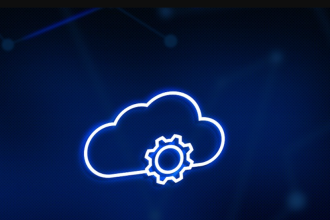In recent years, the adoption of multi-cloud environments has surged, becoming a prevalent choice for organizations worldwide. This shift towards multi-cloud solutions is driven by various factors, including scalability, redundancy, and cost-efficiency. However, this increasing reliance on multi-cloud infrastructures necessitates a strong focus on cloud security platforms to mitigate risks effectively.
Understanding Multi-Cloud Security Challenges
Complexity of Managing Multiple Cloud Providers
One of the foremost challenges in multi-cloud based security monitoring is the inherent complexity of managing multiple cloud service providers simultaneously. Each provider has its own set of tools, interfaces, and security configurations. Coordinating security measures across these diverse platforms can quickly become overwhelming without a centralized strategy.
Shared Responsibility Model and Its Implications
Cloud providers operate on a shared responsibility model, where they secure the infrastructure, while customers are responsible for securing their data, applications, and configurations. Understanding this model is crucial, as misalignment in responsibilities can lead to security gaps. Organizations must navigate this shared responsibility terrain carefully to ensure comprehensive protection.
Compliance and Regulatory Challenges
Multi-cloud based security monitoring often involves adhering to a range of compliance and regulatory requirements, such as GDPR, HIPAA, or industry-specific standards. Ensuring compliance across various cloud platforms while maintaining security can be a daunting task. Non-compliance can result in severe penalties and reputational damage.
The Need for a Proactive Security Approach
Reactive security measures are no longer sufficient in the face of evolving risks. Organizations must adopt a proactive security approach that assesses vulnerabilities and risks before they can be exploited. Identifying and addressing security issues in real time with the help of cloud security platforms is essential to prevent potential breaches.
Best Practices for Securing Multi-Cloud Environments
In the dynamic landscape of multi-cloud environments, implementing best practices for security is paramount to safeguard against potential risks and vulnerabilities. Here, we outline key strategies to help organizations fortify their security posture effectively with the help of cloud security platforms.
Continuous Visibility and Monitoring
Real-time visibility into your multi-cloud environment is the cornerstone of proactive security. It allows you to promptly identify and address security issues before they escalate. With the ever-evolving threat landscape, continuous monitoring is essential. Cloud based security monitoring tools play a pivotal role in providing comprehensive monitoring capabilities, offering insights into configurations, access controls, and network traffic.
Risk Assessment and Prioritization
Identifying vulnerabilities and misconfigurations is the first step towards a secure multi-cloud environment. However, not all vulnerabilities are equal, and organizations must establish risk-based priorities. By categorizing and prioritizing security risks, you can allocate resources effectively and address the most critical issues promptly. This approach ensures that your efforts are focused where they matter most.
Policy Enforcement and Compliance
Consistency in security policies across multi-cloud platforms is crucial. Ensuring adherence to security policies minimizes the risk of misconfigurations and security gaps. Automation in the compliance arena plays a vital role in policy enforcement, as it helps reduce human error and strengthens security.
Security Posture Remediation
Timely resolution of security issues is essential to maintain a robust security posture. When security risks or misconfigurations are identified, swift action is required to mitigate potential risks. Whether it’s closing security gaps or reconfiguring access controls, remediation efforts must be prompt and well-coordinated.
Collaboration and Communication
Effective security in multi-cloud environments often involves multiple teams and stakeholders. Facilitating cross-team collaboration is vital for a holistic security approach. Clear lines of communication, both within the security team and with other relevant departments, help in sharing insights, responding to incidents, and aligning security efforts with broader organizational goals. Reporting and alerting mechanisms ensure that everyone stays informed about security issues and incidents as they arise.
By adopting these best practices, organizations can enhance the security of their multi-cloud environments, reducing the likelihood of security breaches and ensuring a proactive approach to safeguarding valuable data and assets. These strategies empower organizations to navigate the complexities of multi-cloud security with confidence and resilience.
Strategies for Multi-Cloud Security
When it comes to securing multi-cloud environments, adopting strategic approaches is essential to ensure comprehensive protection. Here, we explore two key strategies that can significantly bolster your multi-cloud security efforts.
Implementing a Unified Security Framework
Implementing a unified security framework across all your multi-cloud environments offers several benefits. Firstly, it streamlines security operations by providing a common set of security policies, controls, and procedures. This standardization simplifies management and reduces the chances of misconfigurations or policy inconsistencies.
Secondly, a standardized approach enhances visibility and monitoring. It allows you to gain a holistic view of your security posture across multiple cloud platforms. With a single, cohesive framework, you can quickly identify and address security issues, ensuring a proactive stance against risks.
Integration of CSPM into Existing Security Processes
Integrating Cloud Security Posture Management (CSPM) into your existing security processes is vital for seamless multi-cloud security. CSPM solutions can be integrated with your security stack, enabling automated monitoring and compliance checks. This integration ensures that CSPM becomes an integral part of your security strategy, providing continuous insights and real-time alerts.
Automating Security Checks
Automation is a key enabler of security as code. By automating security checks and tests, you can consistently and comprehensively evaluate your applications and infrastructure for vulnerabilities and misconfigurations. Automated security checks not only enhance efficiency but also reduce the likelihood of human error.
Furthermore, automation allows for rapid response to security issues. When security checks are automated, immediate actions can be triggered when misconfigurations are detected, ensuring that security incidents are addressed promptly.
Choosing the Right CSPM Solution
When selecting a Cloud Security Posture Management (CSPM) solution for your multi-cloud environment, several factors should guide your decision:
- Scalability: Ensure that the CSPM solution can scale with your organization’s growing cloud infrastructure needs, accommodating both current and future demands.
- Ease of Deployment and Management: Opt for a solution that offers straightforward deployment and management processes to minimize operational complexity.
- Integration Capabilities: Look for a CSPM tool that seamlessly integrates with your existing security stack, allowing for efficient collaboration with other security solutions.
Why CheckRed Stands Out
CheckRed excels in providing a wide range of features and benefits tailored for multi-cloud security. Its robust capabilities include continuous monitoring, risk assessment, and ongoing compliance checks, all designed to enhance your security posture.
CheckRed distinguishes itself from typical CSPM solutions. Its exceptional features and benefits set it apart from the rest. CheckRed not only offers robust CSPM capabilities but also combines them with SaaS Security Posture Management (SSPM) under a single roof. This integrated approach provides comprehensive security coverage, making CheckRed a versatile and reliable choice for securing your multi-cloud environments.
Strengthen Your Cloud Security Posture Today
Multi-cloud security monitoring is a critical endeavor in today’s digital landscape. CSPM tools play a pivotal role in helping organizations maintain a robust multi-cloud security posture. With comprehensive features, CheckRed is a standout choice for safeguarding your multi-cloud infrastructure.
We encourage you to take the next step in enhancing your multi-cloud security. Explore the capabilities of CheckRed further to see how it can benefit your organization. Don’t hesitate to reach out for a demo or additional information. Implement cloud security monitoring with confidence using CheckRed’s trusted CSPM solutions.















